10 Giant Menorahs That Will Light Up for Hanukkah in NYC
From Brooklyn to the Bronx, we’ve rounded up the most exciting giant menorahs that will light up throughout the next eight evenings!

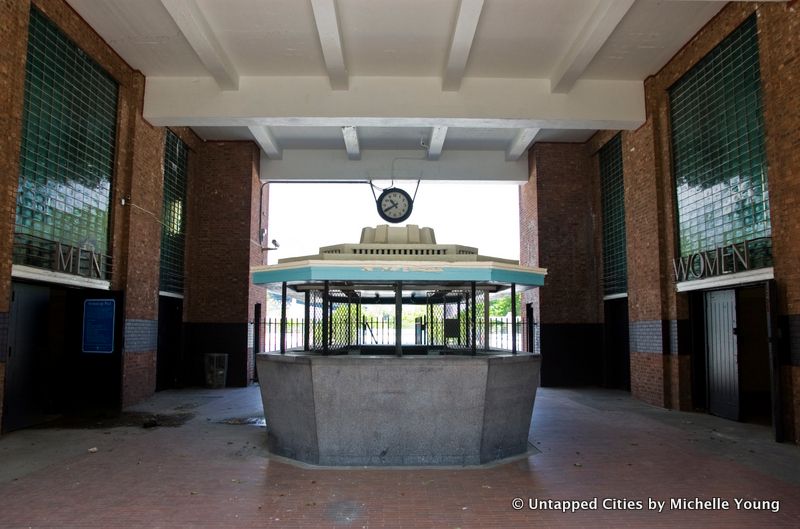
Exploring the Astoria Pool is like stepping back in time to the Art-Deco infused world of Robert Moses’ New York City. The Astoria Pool is one of eleven WPA pools built during the Depression. At Olympic standards, it is not just the city’s largest pool–it also carries the distinction for some of being the city’s “best public pool.” Moses’ own avid swimming was a significant impetus to the aquatic recreation movement in New York City and the Astoria Pool held special significance for him. The pool was built to be set against one of Moses’ hallmark pieces of infrastructure–the Triborough Bridge. With underwater lighting, it could even accommodate night swimming.

The Astoria Pool has certainly fulfilled its promise, leading a storied history that includes Olympic trials for swimming and diving in 1936 and 1964. In both years, two of its fountains served as Olympic torches which burned through the course of the Olympic Games. In the 1940s, a local group of swimmers that called themselves the Aquazanies would put on a choreographed swimming production that included costumes, sets, props, even live animals. Whitney Hart, one of the Aquazanies, became an Olympic diver and an inductee of the Swimming Hall of Fame.
In line with the pool’s history, NYC Parks hopes to restore the diving platform and transform the diving pool into a multi-use performance space. Both elements have not been in use since the 1990, and while structurally sound, is deteriorating rapidly. The diving platform would be adaptively re-used to support audio and lighting equipment. A significant amount of sediment sits at the bottom of the diving pool and the bronze railings have corroded. Your vote in Partners in Preservation an restore this area of the Astoria Pool to its original splendor.
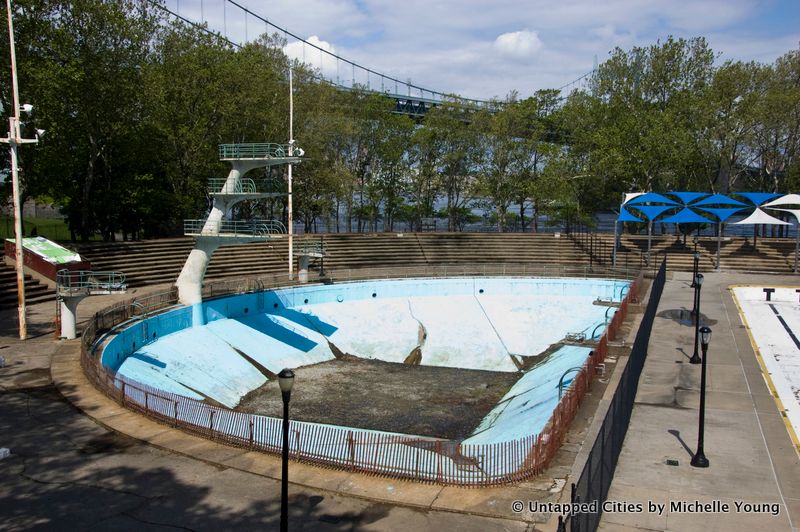
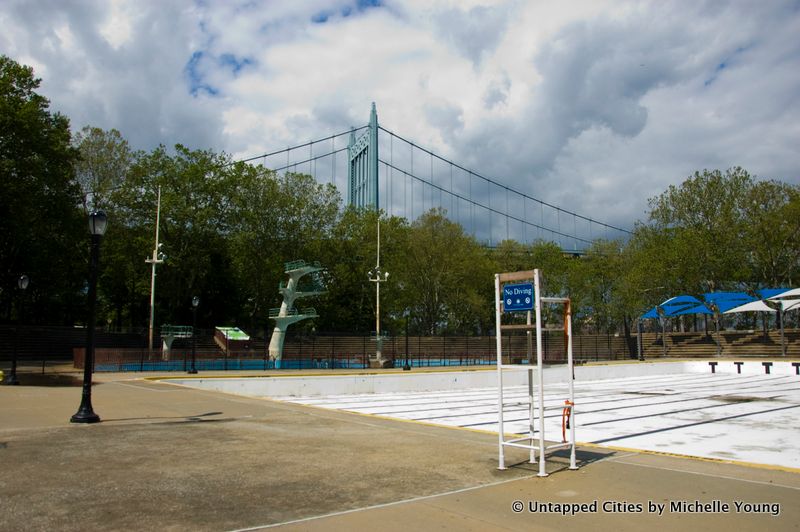
Thanks to NYC Parks, we were given a private tour of the Astoria Pool as it is prepared for the summer opening. It is clear the pool holds a special place in the Queens community and thankfully most or all of the original Art-Deco elements still exist, including signage, vintage lampposts and snack kiosks. The locker rooms are a real treat too.
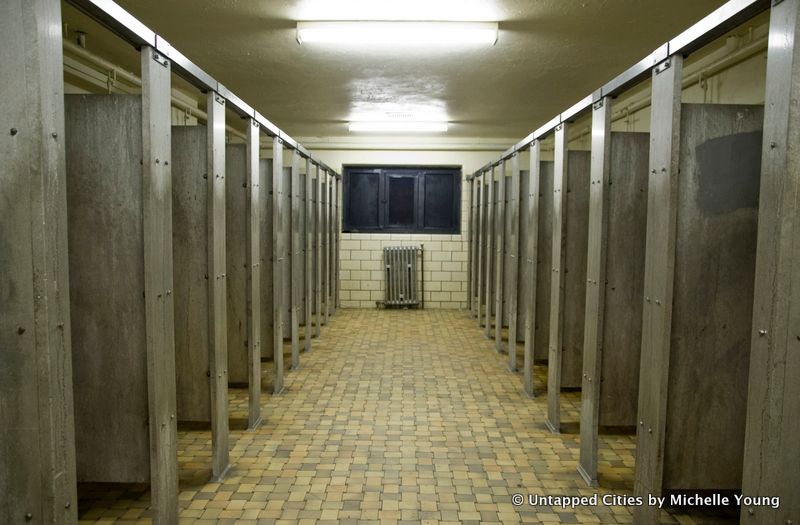
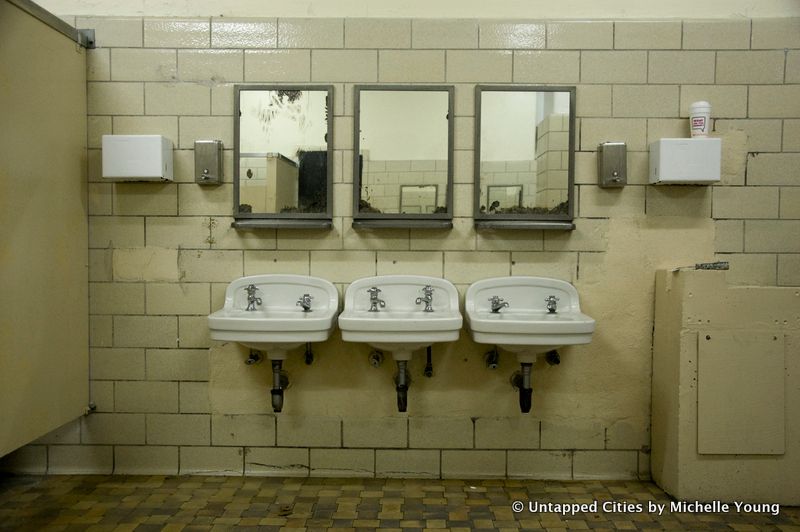
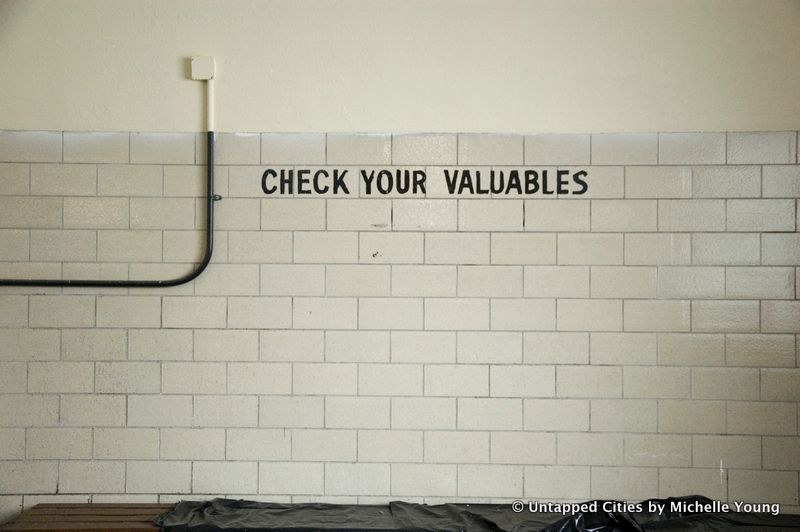

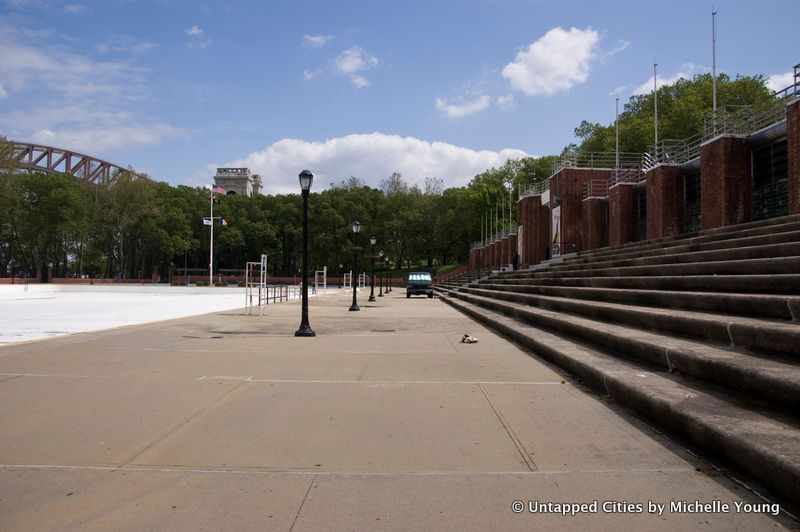
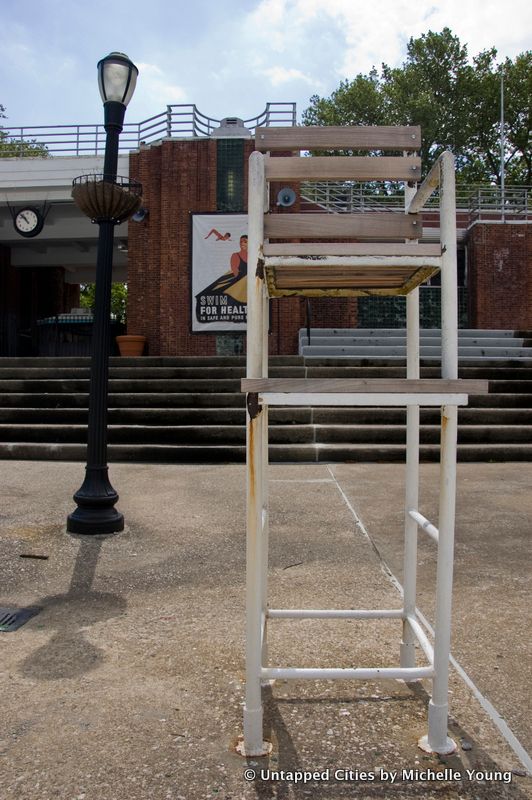
Get in touch with the author @untappedmich.
Untapped Cities is an official blog ambassador for Partners in Preservation , a community-based initiative by American Express and the National Trust for Historic Preservation to raise awareness of the importance of historic places. For complete coverage, follow our Partners in Preservation category.
Subscribe to our newsletter